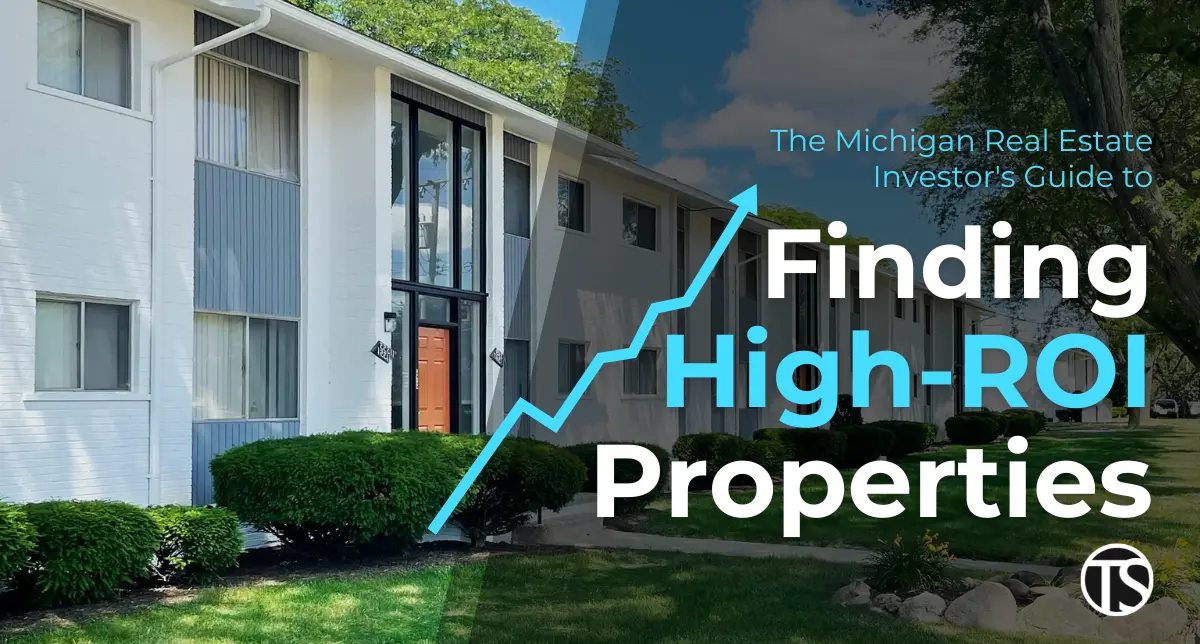The world of real estate investing opens up so many opportunities for income growth, whether you’re looking for simple cash flow from a rental property or long-term financial freedom. But, there are real estate investing strategies that can make the process much easier and more lucrative if you simply master them.
Today, we’ll walk you through 5 of the most common real estate investing strategies to give you insight into how different methods could help you achieve your income goals.
Real Estate Investing Strategies to Learn Now to Grow Your Future Income
Any or all of these real estate investing strategies can be useful but which ones YOU choose is entirely dependent on your personal goals. For example, if you want to make money in the short term, the fix and flip method may work best for you. However, if you’re in it for the long haul, buy and hold could be your best real estate investing strategy.
Let’s take a look at each one, what they mean, and how they could be beneficial to you as you begin to create a wealth-building real estate portfolio.
#1: Invest For Cash Flow
This is one of my favorite real estate investing strategies and one I highly recommend. That’s because when you purchase a rental property and do it right, your tenants’ rent will cover all of your expenses related to that property. That includes any mortgage you might have on it, property taxes, insurance, upkeep and maintenance, repairs, etc. And, as long as you have attracted suitable tenants, you’ll have continuous, predictable cash flow from the property month after month, year after year.
Cash flow from your investment properties helps you pay related expenses but can also give you the funds needed to invest in yet another property. That’s leveraging someone else’s money to purchase another investment that can increase your passive income and build your wealth … How cool is that?
Also, when you invest for cash flow, you may find it easier to get financed for a mortgage on the property. That’s because potential lenders can and often do look at potential rental income as a factor when determining your loan eligibility.
#2: Invest For Appreciation
The definition of ‘appreciation’ is the increase in the value of a particular asset over time. Since real estate typically grows in value as time passes, we say that it appreciates. Investing for appreciation, then, means investing in real estate not for the cash flow but rather, for the expected growth in value.
Investing for appreciation is typically a conservative way to make money since the growth in real estate value happens gradually. Sometimes, however, you may time the market just right and purchase a property with a low price, only to have the market significantly jump soon after. In this case, you could make a profit in a relatively short period of time but most investors see real estate appreciation as more of a long-term strategy.
#3: Fix and Flip Real Estate Investing
Popular TV shows such as Property Brothers and Flip or Flop have made this real estate investing strategy look like almost anyone can do it. The truth of the matter, however, is that although the premise is simple – purchase a property at a discounted rate, fix it up, and sell it at a profit – the process is rarely as easy as it looks on TV!
Unless you are a handyman, skilled in the trades, or a professional builder yourself, this will probably not be your best wealth-building strategy. However, it can be a useful tool for those who are prepared and know exactly what they’re getting into.
This strategy involves finding a less-than-perfect property and buying it at a reduced price due to its poor or degraded condition. Then, with the money you save and your expertise (or that of people you hire), you can fix it up, sell it within a short time period, and make a profit. When all the factors align, some investors are able to make a profit of $30,000 or more at a time.
A word of caution here, however: It’s not uncommon for unforeseen circumstances (such as mold hidden inside walls) to quickly escalate your expenses and reduce your profit.
#4: Wholesaling Real Estate
If you love sales and you’re also good at sniffing out great deals, you might take a liking to this strategy. This real estate investing route involves finding great deals on properties and then selling them quickly for a profit. The difference between this and the fix and flip strategy is that you’re buying properties that can be turned over immediately with little or no need for improvements.
Where you can easily get into trouble, however, is if you aren’t able to sell the property quickly or if it ends up needing repairs or upgrades before being re-sold. Either of these scenarios can limit your cash flow and/or reduce your profit. As you might guess, the key to this strategy being successful is a quick and profitable resell. If you do this enough times, you can make a significant amount of money but it requires constantly looking for the next deal and doesn’t give you passive income.
#5: Buy and Hold Real Estate Investing
This is the perfect real estate investing strategy for someone with long-term goals and it’s one strategy I follow myself. Buy and hold real estate investing is exactly what it sounds like – you buy a property and then hold onto it for 5 years or more.
The key here is to know what a good real estate investment looks like. Then, purchase it and don’t sell it until the time is right. Utilizing this strategy, you can ride out fluctuations in the market which could cause you to lose money on your investment or at the very least, reduce your gains. When you buy and hold rental property, you get it at the best price you possibly can (and with the best rate and terms), enjoy regular cash flow from it, and then sell or refinance at the most opportune time to maximize your return on investment.
Grow Your Passive Income and Achieve Financial Freedom with Real Estate Investing
Regardless of their current occupation, anyone can be successful at real estate investing if they simply know where to start and how to do it right. Investing in real estate can be more than a simple source of income – it can be a wealth-building stream and a vehicle to help you achieve true financial freedom.
If YOU are interested in building long-term wealth through real estate, I invite you to invest with us (accredited investors preferred) or subscribe to my YouTube channel. I’ll show you exactly how my wife and I went from owning $0 in real estate to $5 MILLION in real estate by the age of 30. If we did it, YOU can, too!






